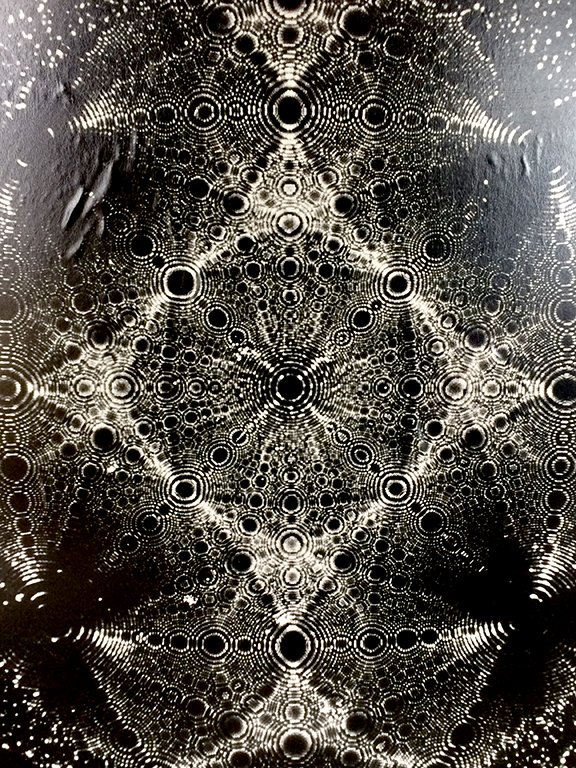It stood on a slight hill. Silhouetted against open skies, the pussy willow’s large gnarled branches seemed curled up in protest against the manicured grass lawns, pruned bushes and carefully tended beds of sticky peonies, tiger lilies and irises of our neighborhood.
On the other side of the island of wild ground the tree held, were miles and miles of cornfields. Because the low mountains farther in the distance were obscured by summer haze, it was easy to imagine the undulating rows of corn as ocean waves going on forever.
I don’t remember the exact day I tired of our bright green and orange swing set our parents had erected near the yard’s edge. I stepped off the green grass into the wild tangle guarding the tree. I picked my way through burdocks which left burrs on socks, clothing and even my hair. Tall blades of grass left cuts on tender, sunburned skin. A carroty perfume covered my hands as I pushed aside airy clumps of Queen Anne’s Lace. Dust from red clay coated everything on me, turning my white sneakers an earthy pink.
By tip-toeing, I could just wrap both hands around the lowest branch. I walked my feet up the trunk until I could swing my right leg up and hook it over the branch. Pulling transitioned to pushing up from the branch into a straddle, reaching for the next branch and climbing up higher. From there I perched in the crook where the branch met the trunk and looked out for miles and miles. Everything behind me, so far away, it was like looking out from the crow’s nest of my own ship.
In reality, I was about 7 feet high. I know this because Dad couldn’t reach me when I was in my perch. I know know he couldn’t reach me because once, after one of my childhood infractions he reacted harshly to, he tried.
I ran from him, burst out the screen door, letting it slam behind me. As I ran past the swing set, I heard the door open and slam again. Dad called, “Jing Jing, Jing Jing!”, as he ran after me. The tree’s branches seemed to gather me up and swoop me out of reach. I stood on my perch, pressed against the trunk, away from him. Looking down, I was relieved to see that I was beyond his reach.
His surprise apology sounded as small as he looked. When he saw me use the back of my hand to wipe away the blood from the crack in my lip, his voice became more gentle. He apologized again and asked me to come down. I did. We returned to the house, each covered in scratches. That night, as I washed the day off before going to bed, each scratch stung a reminder of that evening. I wondered if Dad would feel the same when he and Mom washed up later.
The pussy willow was “my” tree for just one summer.
On the second summer, instead of corn growing in the nearby fields, the frames of new homes grew amidst the buzzing of boards being cut and the pounding of nails being hammered. Soon, construction sounds were replaced with the voices of kids playing outside. One day, those voices were louder than usual. From the kitchen window, I saw my tree held 4 strangers! I rushed out and indignantly claimed the tree. They claimed the tree. For several mornings I would rush out to the tree, sometimes with my sisters or with my neighborhood friends. Sometimes we reached the tree first, sometimes they did. It was us against them, the tree in the middle. We threw rocks at each other, waved sticks threateningly. Each side yelling claim to the tree. It was exciting.
Then one afternoon, my parents returned home from shopping with an unexpected gift. A beautiful, lime green glittery bike. It had a white rimmed small wheel in the front and a larger wheel in the back. There was a silver horn with an orange bulb. The banana seat was covered in white vinyl embedded with silver sparkles. As if the bike were not already a dream come true, my parents attached a long orange pole holding a triangular fluorescent orange safety flag with a blue graphic of Evil Knievel flying through the air on his stunt motorcycle. The most amazing part of this gift—I wasn’t expected to share with my two younger sisters, it was just for me.
Suddenly, instead of putting my energy into claiming my tree, I was riding my bike through the neighborhood and the backroads dividing the cornfields.
But I’ve never forgotten “my” tree and that sense of freedom I had when it held me in it’s branches. In my graphic novel, Fake Chinese Sounds, I gave the protagonist, Mei Ying, her own tree, overlooking rolling cornfields. As I was drawing, I liked to think that Mei Ying was imagining the ocean horizon and the possibilities her future holds.















